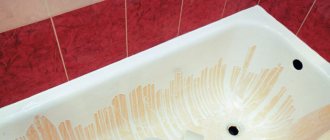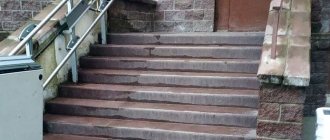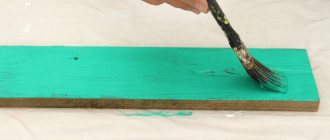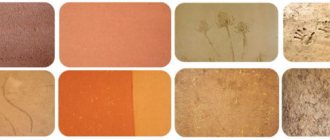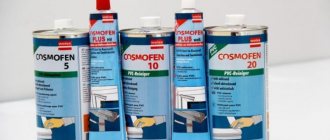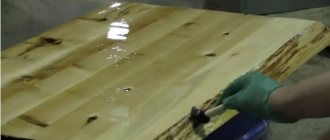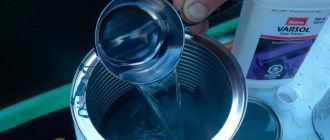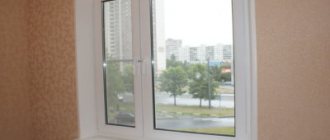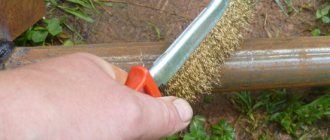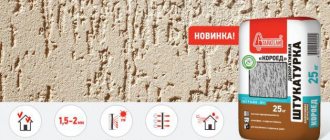Any repair work requires not only a large number of different materials, but also the ability to handle them correctly. The quality of walls or ceilings depends on the latter. Few owners of apartments and houses can be proud of perfectly smooth surfaces, so putty is a must-have material for almost everyone. It is sold dry and ready-made, but the disadvantage of the latter is its short shelf life, so semi-finished mixtures are more popular. However, you need to know how to dilute the putty in order to achieve the correct consistency, and therefore the ideal result - a perfect finish.
Features of dilution of the composition
Thinning plaster is a process that requires following a sequence of actions. The work begins with the preparation of equipment, which is subject to increased cleanliness requirements.
When mixing the solution, it is important to follow the sequence of work:
- Studying the instructions for the material and calculating proportions. It is necessary to read the instructions, which indicate the proportions for a specific brand. The standard proportion is 25 kilograms per 10 liters of water.
- Water preparation. A specified volume of water is poured into a clean container.
- Introduction of the mixture. Dry powder is poured into water in a thin stream.
- Kneading After introducing the powder, leave the container for 1 minute so that the dry particles are saturated with water. After this, they begin to stir with a construction mixer at low speeds, gradually increasing the speed to 600 rpm.
- Swelling. The diluted solution is left for 10-15 minutes to infuse. After this, it is thoroughly mixed again.
If the finished mixture differs in consistency from the required one, then the putty can be diluted with water. In the finished composition, the spatula does not get stuck or sink.
The putty is light and easy to use, but there are certain rules when working with it
What should the solution be?
High-quality work is possible when the mixture is plastic and elastic. The finished solution should resemble thick sour cream. Uniformity can be achieved if the tools used are clean and there is no debris in the workplace.
Sometimes experts deviate from the specified parameters and create a thicker or thinner composition. On dense, homogeneous walls, a thicker putty is used, which sets quickly. On brick and concrete, where there are cracks and inhomogeneities, it is more liquid.
The mixture should not stick to the spatula or roll off. There should be no inhomogeneities, lumps, or rocky inclusions in it.
In order to properly dilute the required mixture, you must carefully read the instructions
Preparing the mixture manually
If it is not possible to purchase a special tool, then the solution can be prepared manually using a spatula. You just have to tinker a little with this solution. In this way, you can prepare putty for starting work, since there are no special requirements for it.
The prepared mixture should be used within 40 minutes. If the putty has not been applied during this time, it will inevitably thicken. You should not add water to the thickened mixture, as this will only worsen the quality. It is better to throw it away and prepare a new one. Further work cannot be carried out with such putty.
To prepare the next portion of the mixture, the bucket used must be thoroughly washed so that no fragments of the old composition remain. Thickened particles, once added to a new batch, will significantly reduce its working efficiency. For example, it may thicken faster. Clean, rust-free water is used for mixing.
To mix the putty, you must use a household bucket (galvanized, plastic or enameled). Do not use basins or other containers that have rounded corners at the bottom. By placing the drill attachment in a bucket of water, you can clean it of putty residues by twisting it in different directions. To do this, use the reverse function. To allow water to drain from the nozzle, you must place the drill on the bucket in a horizontal position.
Putty dilution ratios
Aiming proportions and technology recommendations for each manufacturer are printed on the packaging. Despite this, experts identify general rules and relationships for various compositions.
It is important to understand that the consistency of the mixture and the features of its mixing depend on:
- putty basics;
- appointments;
- surfaces;
- volume of work.
The standard ratio for different types of putties is as follows:
- gypsum – 1 kg per 800 ml of water;
- polymers – 1 kg per 400 ml of water;
- cement – 1 kg per 400 ml of water.
The liquid composition flows down the walls without having time to set. Dry - on the contrary, it sets without having time to lie evenly on the desired area.
The usually accepted ratio for preparing gypsum putty is 10 liters of water per 25 kg of dry mixture
Cement based putty
With this, you can eliminate all unevenness, differences and various cracks by applying the product to the surface of the wall. It is suitable for work in any room - both dry and high humidity. Cement putty can also be used to finish the facades of buildings made of concrete, brick and stone.
In the store you can purchase a dry mixture of cement putty in special packaging or a ready-made solution. has a number of disadvantages: when drying, shrinkage occurs, and the applied thick layer of the mixture may crack. It is sold in a special plastic container.
As for the dry mixture, you should know that it has a cement base. The required consistency is achieved by kneading. The putty has good adhesion and excellent strength (when completely dry, cracks do not appear). But this is only if it is properly prepared and applied to the surface.
What tools are needed
Before mixing the working solution, all materials should be cleaned and laid out. To work you need:
- bucket;
- dry mixture;
- water;
- mixer;
- putty knife.
It is important to check the cleanliness of the instrument and container. In a dirty container, the solution sets faster and loses its characteristics.
The process of diluting putty begins with the preparation of equipment
Breeding methods
Experts identify two main ways to dilute putty: manual and mechanical. The main task when applying the mixture is to obtain a homogeneous, plastic material that can be easily applied to the wall.
Manually
The manual dilution method involves stirring the putty without a mixer. Instead, use a construction whisk or other available tool.
Before stirring the putty, prepare a clean bucket. 6-8 trowels of powder are poured into it. Then pour in water. The mass is continuously stirred so that no lumps form. Then the remaining dry part and water are gradually introduced to the desired consistency.
With the manual method, water is gradually poured into a measured amount of the mixture.
Mixer
Using a construction mixer is the fastest and most convenient way to apply the working solution. When using the tool, the sequence of actions is different.
The required volume of water is poured into a clean container. Then add the required amount of powder. Before stirring the dry putty, let it sit for 1-2 minutes. Dry particles should be saturated with water and sink to the bottom. After this, the composition is stirred with a mixer.
The tool should run at 600 rpm. High speed leads to oversaturation of the solution with oxygen, which negatively affects its strength characteristics
Attention! The composition should be homogeneous. After the kneading is completed, the container is left to sit for 10-15 minutes.
Mixing using the nozzle begins clockwise, occasionally turning on reverse
How to dilute putty without a mixer
Preparing putty without a mixer
If you don’t have a special tool at hand, you can dilute the putty manually. This method is applicable for preparing a starting coating, which is not particularly demanding on the mixing method. For this, use an ordinary bucket or other container without rounded corners. A portion of putty powder is poured into a plastic container, then warm water is added and gently stirred with a stick. It is worth paying attention to the fact that, unlike the mechanical method of mixing, with the manual method it is water that is added to the powder, and not vice versa. If you add the powder to water, the mixture will set in lumps, which are difficult to stir to a homogeneous consistency by hand, while this is possible when using a power tool.
Then the rest of the putty is poured out and, if necessary, diluted with water to the required consistency. The composition is mixed using a spatula. When the mixture becomes homogeneous, it is left to swell for 5 minutes, then mixed again.
Types of putty and features of their dilution
Before mixing the putty, it is necessary to determine its purpose, base, grain size, and readiness for use. The composition is sold diluted or in powder form.
Cement
Cement putty contains cement in its base. It has a gray color. Based on grain size, there are base (with larger grain) and finishing (fine-grain) mixtures. It is used for finishing interior and exterior rooms, bathrooms, and places with high humidity.
Dry and ready-made cement compositions are found on sale. The thickness of the working mixture depends on the surface being treated:
- If it is necessary to treat a small area with large defects, the composition is made thicker.
- If the surface is relatively flat, but large in area, then the mixture is made more liquid. It sets more slowly, allowing you to process more of the wall.
Cement material is a universal and affordable material with good strength characteristics.
Cement
Plaster
Gypsum putty is made on the basis of gypsum. It has become widespread for interior decoration. Depending on the marking, it is suitable for the base and top coat. Allows you to obtain a smooth, even surface.
The main advantage of gypsum mixtures is their pure white tint. Paint adheres well to it without additional preparation. Disadvantages include low resistance to moisture. Therefore, gypsum mixtures are not used in the renovation of rooms with high humidity.
When aiming, follow the rules - pour the dry mixture into the water in a thin stream. After 1-2 minutes, when the powder has settled, it is stirred again. If the consistency differs from the required one, add water or add gypsum.
The instructions and a simple test allow you to determine how to properly dilute gypsum putty. To do this, take a small volume onto a spatula and apply it to the surface. If the mixture sticks and is completely removed from the spatula, then the solution is ready for use.
Plaster
Acrylic
Acrylic putty belongs to the category of polymer materials. It is suitable for finishing interior and exterior spaces. Medium grain makes the material versatile and makes it possible to use it as a base and finishing layer.
The solution should be mixed in a certain proportion: water is added 3-5% more than the volume of the mixture. The components are thoroughly mixed until a homogeneous mass is obtained. Experts recommend using the mechanical kneading method.
Acrylic
Latex
Latex putty is a material that is used for finishing interior spaces. Its main disadvantage is its exposure to aggressive natural factors.
The advantages of latex putty include plasticity, elasticity, and resistance to shrinkage. It does not crack even when applied in a thin layer.
When diluting the latex mixture, strictly adhere to the proportions specified by the manufacturer and follow the dilution technology.
Latex
Starting
Starting compositions are intended for applying the base layer. Its function does not include creating a smooth surface. The mixture has a high degree of adhesion and allows you to remove unevenness and potholes on the walls.
Its peculiarity is its larger grain structure. Thanks to this, increased mechanical strength of the material and the possibility of application in a thicker layer are achieved. The composition is adjusted in the proportions indicated on the packaging. To get a high-quality solution, it needs to brew for 10 minutes. This time is used to completely wet the large grains.
Starting
Finish
Finishing putty is intended for applying the final layer or laying on a pre-treated surface. It has fine grain. After hardening, the surface becomes smooth, uniform and pleasant to the touch.
When talking about how to dilute putty for the finishing layer, it is necessary to mention the mixing method. Experts recommend kneading the mass in several approaches. Long kneading eliminates the formation of even small lumps. When the mixture becomes homogeneous, leave to infuse for 3-5 minutes.
The finishing putty for walls is applied in a thin layer. It does not exceed 1 millimeter. Therefore, the presence of inhomogeneities in the solution is unacceptable.
It is possible to obtain a homogeneous plastic mass only with mechanical mixing. A mixer is used to adjust the finishing compositions.
Finish
Universal
Universal putty is used to apply the starting and finishing layers. It is characterized by increased cost and average technical indicators. The grain fraction is not coarse, but larger than that of the finishing composition. It is recommended to use it for processing small areas of the wall or where there are large potholes.
When kneading, a mechanical method is used. The solution is stirred in two stages with an interval of 10-15 minutes.
Universal
Types of putty mixtures
Packaged gypsum putty
Putty mixtures come ready-made and dry. Ready-made mixtures are sold in plastic containers, and dry building material is sold in powder form in paper bags. Ready-made putty is more expensive than dry putty, and its use is advisable for minor repair work. If you are planning a large-scale repair, it is better to use a powder mixture, which must be diluted correctly. To find out how to properly dilute putty for walls, you need to take a closer look at the existing types of this building material:
- Oil-based adhesive composition: moisture-resistant, used for covering walls in rooms with high humidity levels. These putties can be used to coat wood and metal products to protect them from rot and corrosion.
- Gypsum putty: consists of a gypsum cement base, used for most finishing works.
- Water-dispersed compositions after puttying form a smooth and durable surface.
- Multifunctional acrylic putties are used to level the surface and remove cracks from old coatings. Acrylic facade compositions are used for exterior work and have high moisture resistance.
- PVA-based putty is a universal mixture that has antifungal properties.
Dry putty must be diluted correctly, otherwise the coating will crack and crumble. To ensure that the coating is reliable and does not crack, certain conditions must be observed when working with it:
- Properly dilute dry putty, following the manufacturers' instructions, observing the required proportions.
- Before application, remove any remaining old coating.
- In order to ensure good adhesion to the surface, it must be primed.
- After priming, an interval of at least 6 hours should be allowed before starting to putty the surface.
- Apply putty in two layers.
- The first layer should dry exactly 24 hours, then the topcoat can be applied.
- Also, a day must pass after the finishing coat before wallpapering or other decorative finishing begins.
Before diluting the putty, you should take into account the type of work for which it is used - starting or finishing finishing; therefore, the consistency will be different.
Storage tips
The putty sets quickly. For this reason, experts recommend setting the volume that is easy to implement. The stirred mixture cannot be stored. It sets and freezes into a single lump. To remove it, use a mechanical method.
Another distinctive feature of the solution is that it begins to set even faster if even small loose lumps get into the container.
Experts also note that if the dry mixture is stored incorrectly, its quality is lost. Therefore, it is necessary to adhere to the rules for storing material:
- Closed packages are stored in a dry room where the air temperature is more than 5 degrees.
- Open packaging is tightly closed and stored in a warm, dry place.
- If there is high humidity in the room where the mixture is stored, the packages are additionally covered with plastic wrap.
- It is not recommended to store an open package for more than 1-2 months. During this time, it absorbs moisture from the air and loses its performance characteristics (it becomes damp).
It is recommended to store and use the induced solution within 30-40 minutes. During this time he does not have time to grab.
Do not prepare too much putty mixture at once, otherwise the material will be difficult to distribute over the surface.
How to dilute gypsum putty
Dilution of gypsum facade putty
Gypsum putty is used in rooms where there is no high level of humidity. Gypsum compositions have a high drying rate of two or three days. Gypsum putty is poured into a bucket filled 1/3 with water in a thin stream until the powder exceeds the water level by 1/3. After thirty seconds, the powder should settle into the water. Then the solution is mixed with a power tool for 1-2 minutes. If the mixture has not acquired sufficient viscosity, add water or powder while continuously stirring the solution. If you wait at least 1-2 minutes, the mixture will begin to set and you will no longer be able to add one of the ingredients. The solution is stirred twice with a break of one or two minutes. Then the viscosity is checked: the correct consistency should be such that the putty sticks to the wall, but does not remain on the spatula. You should not use the tool when mixing at high speeds: air will enter the mixture, which will form bubbles during application to the surface.
Are there pitfalls and nuances?
Experts say that violation of mixing technology can change the performance characteristics of the mixture. As a result, the surface will be of poor quality. Knowing the intricacies of applying the solution allows you to avoid common mistakes:
- Sequence of introduction of ingredients. All ingredients should be introduced in the sequence indicated in the technology. If an additional dry ingredient is needed, it is pre-mixed with putty.
- Consistency. Too thick a mass sets faster than a liquid one. This nuance must be taken into account when calculating the volume for the batch. Experts recommend making small portions that are easy to use before setting begins.
- Tool operating speed. Experts recommend mixing the solution using a construction mixer. It allows you to achieve uniformity of the composition. Work begins at low speeds, gradually changing the mode to a higher speed one.
- Purity. The container for each serving must be thoroughly rinsed. You can only use a tool that is not dry. The combination of old and new particles leads to a violation of the elasticity of the mixture and the quality of its application.
- Features of the nozzle. Experts recommend using a nozzle with spiral blades. If there is only one spiral on the nozzle, then one should be left-handed and twisted clockwise. This feature of the nozzle helps to obtain a homogeneous composition.
If it is necessary to knead a volume to treat a large area, then it is recommended to make the putty thinner.
It is better to purchase mixtures in specialized construction stores or hypermarkets
A homogeneous, high-quality solution is important not only for applying the finishing layer, but also the base layer. Violation of proportions leads to the fact that the layer does not adhere well, cracks or peels off. Compliance with dilution technology allows you to obtain a high-quality surface.
Did you learn something new? Share in the comments!
What do you need to know about putty?
Dry putty has a paste-like consistency. It contains film-forming elements, various fillers, as well as coloring pigments. Depending on the content of the components and the purpose of the solution, it is used indoors, outdoors, for sealing cracks and leveling walls. Therefore, when choosing a putty, you need to consider where it will be used.
For example, dry cement mixtures can be used on facades or in cold and damp rooms. Since they are resistant to temperature changes and outdoor conditions.
Inside the rooms, gypsum putty is mainly used. Due to the fact that the solution is based on gypsum, it is able to regulate the humidity level in the room, and can also be easily applied to the ceiling and walls. The use of such compounds in a humid environment is prohibited. Otherwise, they will begin to collapse very quickly. This will make the work of finishing the surfaces in vain.
Therefore, when choosing a putty material, you should pay attention to what components the solution is made from and where it should be used.

